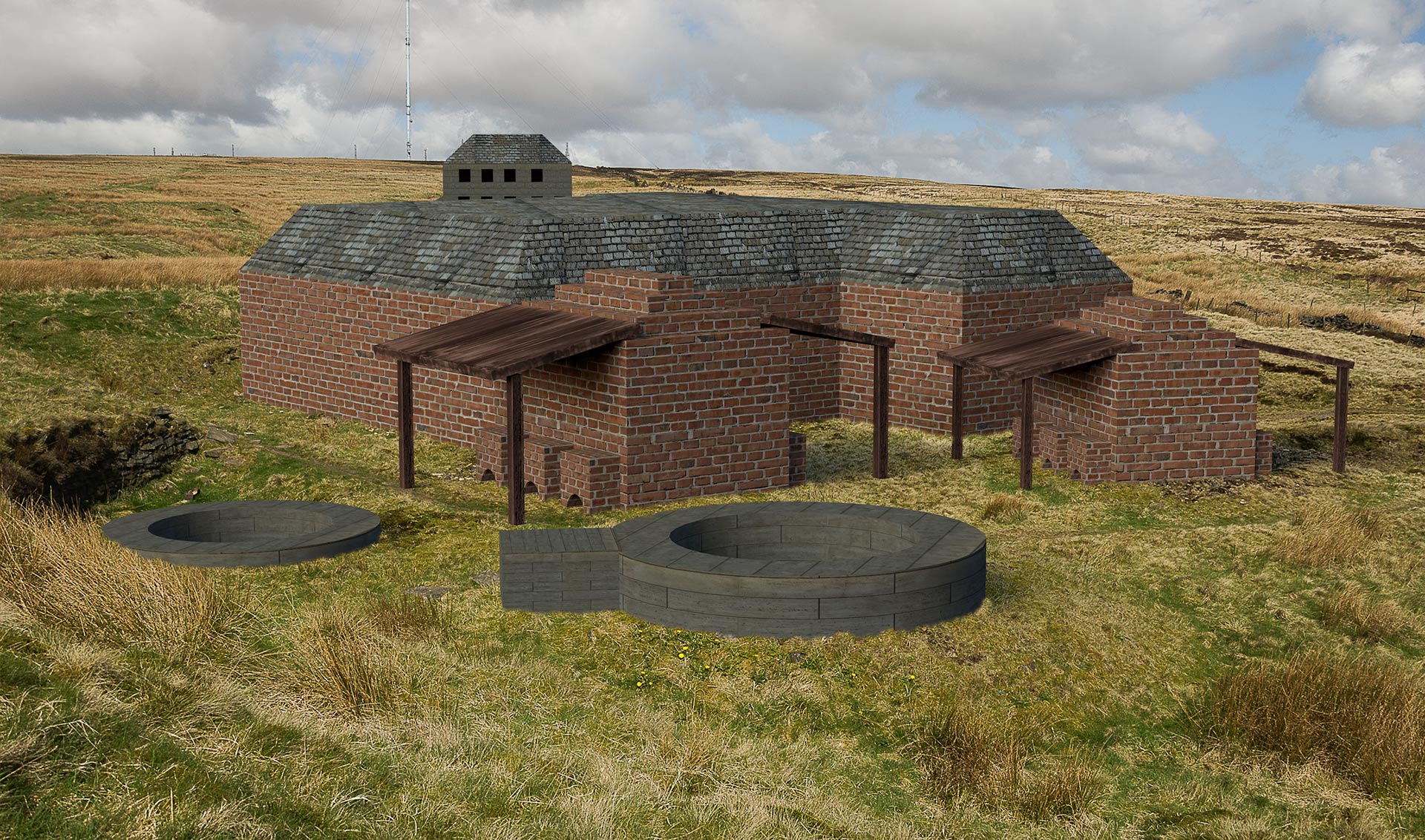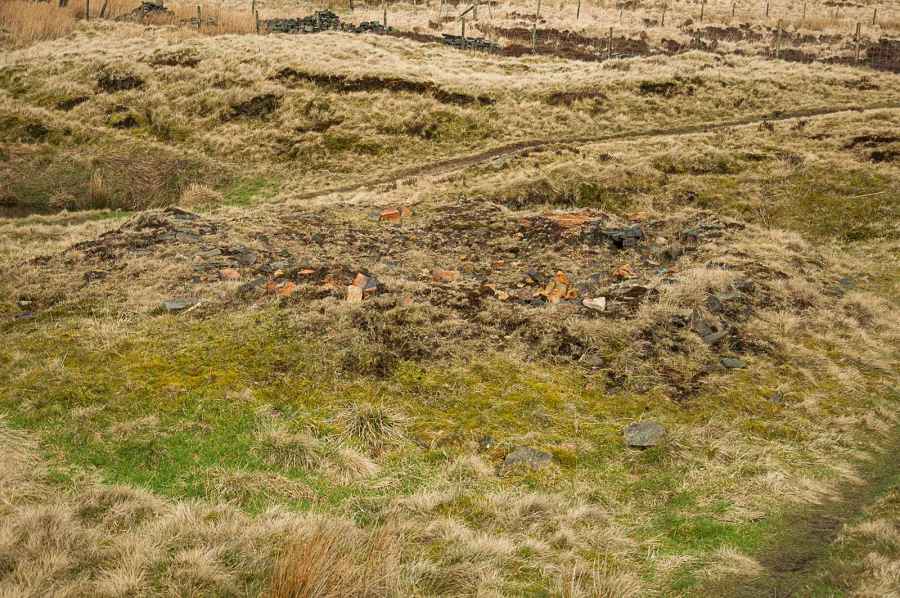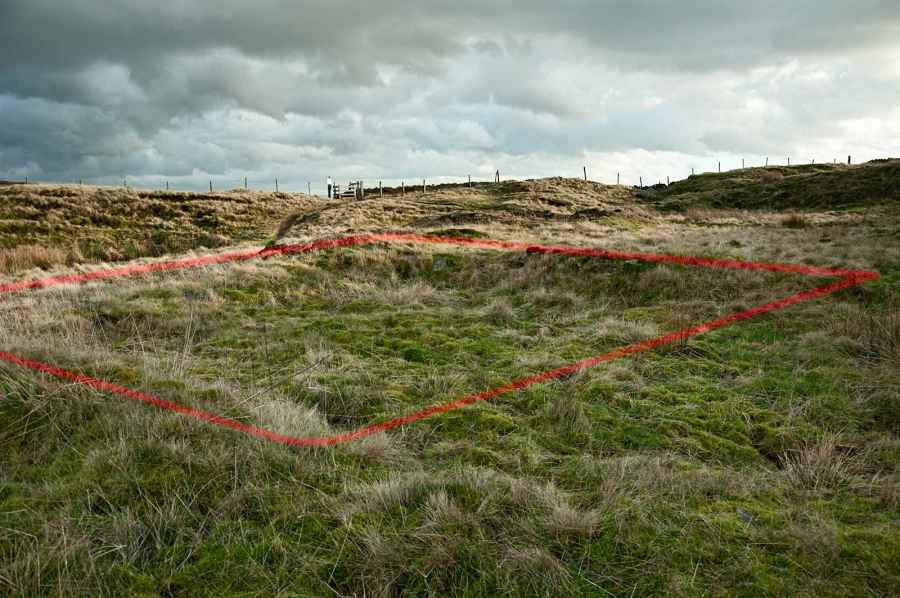
Winter Hill Brick and Tile Works at Hole Bottom by munki-boy
Winter Hill Brick and Tile Works
Just next to the mast access road on Winter Hill, the old Bolton to Belmont track, at the start of the Hole Bottom area are the extensive remains of the old Winter Hill Brick and Tile Works, or the Five Houses Brickworks as it was variously known.
Before we go on, let me explain about the 3D visualisation I have made. I have no idea what any of these buildings or structures looked like. I do know the shape of them on the ground, and in some cases their uses. The walls and rooves and other above-ground-level structures are entirely of my own imagining. It may be that I have some knowledge that may help towards an educated guess but maybe not. There’s plenty of stuff to look at on the ground, and if you pass this way from time-to-time you’ve probably noticed the ruins or might be aware there’s some kind of kiln down there.
The works was run until the mid 19th Century by Garbutt of the nearby Five Houses on Winter Hill. It seems Garbutt wanted out of the business by 1849 as this advertisment was placed in the Bolton Chronicle which I quote from Dave’s Winter Hill Scrapbook:
TO BE LET. An extensive and well established Fire Brick and Tile Works, situated at the Five Houses, Horwich Moor, the present proprietor being desirous of retiring from the business. The works are complete with Steam Engine, Grinding and Crushing apparatus, Stoves, Drying Houses, Ovens, Moulds and every convenience for carrying out business. The clay and coal being of superior quality, and are got on the premises at very trifle expense. P.S. Any person taking the works can be accommodated with five or six acres of land and a few cottages adjoining. For particulars apply to Mr Wm. Garbutt in the premises, or on Monday at the King’s Arms and Four Horse Shoes Bolton.
Judging by later maps the business carried on for some time with an increase of buildings on site. The “few cottages adjoining” mentioned in the advert are actually the Hole Bottom houses (read more…) rather than the nearby Five Houses also mentioned.
Of the buildings I’ve shown here, the largest are the drying houses and the kiln to the rear-right are known buildings although, as mentioned I only know the shapes on the ground. Some people assume the kiln here to be of a round construction but it is rectangular, any roundness being an illusion from the shape of surrounding collapsed rubble.
The pit shaft in the foreground is shown as an old shaft on many maps and there is a large circular stone structure visible today. I find this a source of some confusion.
The leftmost shaft I have shown is a circular structure on old maps and a small depression in the ground today, however there is a large stone wall seemingly to support the bank of the road above. I assume the structure here was a companion shaft to the other mentioned as other local clay pits seem to have two shafts. I don’t know if this is correct, I just know there was a circular structure here at some point.
To be exact, my own guess is that the leftmost round structure was the site of the old shaft, while the circular structure shown on the right here would be an old stone, round kiln contemporary with other nearby kilns and interpreted wrongly as the old shaft on OS maps. I’m pretty sure it’s a kiln but there are a few cirular stone shafts in the area, they’re less robust structures than this.
The kiln shown to the left of the image is a rectangluar structure, not quite aligned to the large building and of very similar dimensions to the known kiln. So I’ve shown it as another kiln here, but on later maps it is replaced by a rectangular structure of similar dimensions but aligned with and integral to the large drying sheds.
There are few pieces of slate on the site today so I assume at least some of the buildings had a slate roof and the slate was later taken for use elsewhere after the works were abandoned.
I believe brick is the material of choice for building brick kilns so I have used brick for many of the structures on site.
I know of no photos of the Winter Hill Brick and Tile works during it’s working lifetime but I’d like to see one.
The Old Kiln
The old kiln was quite well preserved for many years, gradually being covered by turf. Someone’s been digging around over the last couple of years and the little flue that was always exposed when I was a kid was revealed fully. Sadly probably due to erosion and interested passers-by this is now almost completely obliterated. A second flue has since been uncovered to a lesser extent and it looks a bit more hardy than the former. The shape of the kiln is pretty easy to make out and you can see evidence of intense heat on some of the bricks, particularly around the exposed flue.
The Drying Sheds
The drying shed or sheds (sometimes I’m not sure if the room was divided in two), were large rooms with a gap under the floor, supported by brick columns. The idea was to pass heat under the floor to speed up the drying of damp clay, I’m not sure if this was when it came out of the ground or after the bricks were shaped. It is often said the floor is similar to a Roman Hypocaust, which was a similar structure but used to supply underfloor heating to Roman villas.
You can easily see the rectangular shape of the old drying shed building as the hollow floor has collapsed. I think I can recall when I was very young some of the concrete floor was still in place but tilted at an angle, the moorland grass being sparse on top. There were a series of holes going under the floor by the side of the path. You can still find a few holes to poke around in but the main floor is almost completely collapsed and the remaining void filled with mud.
Created: 14 April 2024 Edited: 26 May 2024




Winter Hill Brick and Tile Works
Winter Hill Brick and Tile Works LiDAR Map
Contains public sector information licensed under the Open Government Licence v3.0
Local History around Winter Hill Brick and Tile Works
There are some historic monuments around including:
Headless Cross, GrimefordRound cairn on Winter HillGidlow Hall moated site, Aspull, 560m NNE of Pennington HallRound cairn 280m west of Old Harpers FarmRound cairn on Noon HillPike Stones chambered long cairnRound Loaf bowl barrow on Anglezarke MoorSteam tramway reversing triangle.






